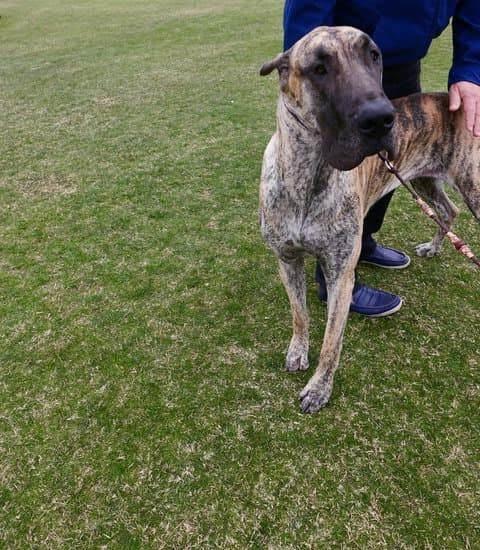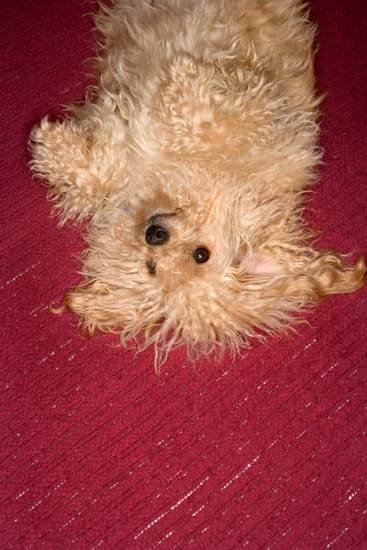Implementing Resources
Trainers: Professional trainers can help owners properly train their dogs to stop fighting. They can provide one-on-one services or offer classes in a group setting. Positive reinforcement is typically the most effective method of training and using rewards, such as treats and praise, when your dogs do something correctly can help them learn how to solve a problem.
Animal Behaviorists: Animal behaviorists specialize in training animals that display aggressive behaviors. They utilize specialized approaches that look at the history and background of a pet, assess their environment, and teach new behaviors that can replace the inappropriate ones.
Books: There are many books available for owners looking for tips on how to train their dogs to stop fighting. The books can provide advice on getting started with basic commands or strategies for dealing with specific behavioral issues like bullying between two or more pets. They should always be used in conjunction with professional guidance from experienced trainers and/or animal behaviorists.
Using Toys to Reduce Aggression
The best way to train a dog to stop fighting is by using toys. The key is to understand how different types of toys can help reduce and control aggression between two dogs. When a dog feels bored, they are more likely to become aggressive and pick a fight with their companion. Thus, providing plenty of toys that the two dogs can enjoy together within a designated play zone will encourage them to engage in activities that will focus their energy away from aggression towards one another.
The type of toy for the play zone should be carefully chosen as certain kinds can cause an escalation in fights between more aggressive breeds. Rope toys, rubber balls and ice cubes can act as distracting devices that teach positive behaviors while reducing the potential for conflict. The first step involves introducing the dogs to each other in an area outside of the play zone before offering a distraction toy, beginning with rope toys that they can both tug on or balls they can share while playing fetch. This will help them get used to engaging in cooperative play and break up any tension between them so that you know it’s safe to introduce them into the play zone without having any issues when it comes time to fighting.
In addition, ice cubes are highly effective at providing distractions during fights given their unique properties which excite pups due to its scent, taste, temperatures and crunching sound it makes when chewed on or kicked around during playtime rushes. Lastly, keep an eye out for any signs of fight escalations and ensure no toy triggers any negative behavior whether played together or not – such as overly stuffed animals, squeaky toys with eyes or tug-of-war objects like ropes with knots – as losing could lead some breeds feeling humiliated or embarrassed leading to further fights down the line from insecurities built up which could have otherwise been avoided had you instead provided a variety of safe objects letting them happily channel their energy as intended!
Feeding Schedule
Creating a feeding schedule for your dogs can help decrease their likelihood of fighting. Begin by ensuring that each dog is always provided with enough food and water. For example, you should provide small meals multiple times throughout the day, rather than one large meal at once. You may also want to consider separating the two when they eat, as this will prevent competition over food. If your dogs are still fighting after implementing a consistent feeding routine, then you could also give them different types of treats as a form of positive reinforcement when they display calm behaviors and don’t fight around each other. This way, you can encourage positive behaviors and discourage aggression between them. Additionally, having both dogs involved in exercise activities such as walks can be beneficial for decreasing aggressive behavior as it gives both dogs an outlet for their energy and restores their confidence in themselves and in the world around them. With some patience and consistency, you can train your dogs to stop fighting and establish peace in your household again!
Environment Adjustment
Transition to Appropriate Behavior: Establish a cue for transitioning from aggressive behavior to non-aggressive behavior, such as a hand clap or tap on the shoulder. This cue should be repeated each time one of the dogs starts to act aggressively, so that they learn that aggression is not rewarded and that different behavior will be rewarded instead.
Management of Triggers: Monitor your situation in order to identify any possible triggers for aggressive behavior and either limit or remove them. Common triggers include food, toys, other people or animals and movement. Eating separately and creating separate resting spots can also help with this.
Redirection & Positive Reinforcement: Redirect their focus by providing alternate activities when they appear likely to fight. Additionally, reward desirable behaviors through positive reinforcement such as treats or affection in order to shift the focus away from fights and onto desirable behaviors.
Natural Remedies
Homeopathic and herbal remedies can be an effective and natural way to help stop dog fighting. By exploring these supplements, owners can identify the potential root causes of their dogs’ aggression. This could include anxiety, fear, competitive instincts, or more recently learnt bad habits.
These supplements are formulated to provide additional nutrition in order to reduce stress and improve overall mood. Unlike traditional medications, holistic methods such as homeopathy work on the principle that “like cures like”. In other words, a substance that produces symptoms of illness in high doses when given in small doses can reduce them. As such, specific combinations of herbs may help dogs struggling with aggression and eliminate some of the triggers of fighting.
Owners should research if any natural remedies have been proven effective for competitive behaviours between certain breeds. For instance, certain types of Chinese herbal mixes are known to be very beneficial for calming overly aggressive herding breeds. They should also try visiting a certified homeopath for tailored recommendations for both short-term relief from fighting and long-term prevention.
Alternative Outlets
There are many alternatives to teaching your dogs not to fight. One of the most effective strategies is to introduce other activities in which your dogs can use energy and channel their aggressions. Outdoor activities such as canine sports and agility training are great ways for your pets to burn off extra energy while also learning how to focus on a task at hand. Engaging in these types of activities with multiple dog owners in the area can also serve as a way for them to socialize with one another and create positive associations with other animals and their owners. Additionally, if playing outside isn’t an option, there are several puzzle toys or treat dispensers that can keep your dogs mentally engaged and require problem-solving skills that may help reduce the potential for aggressive behavior. Furthermore, providing them with lots of exercise, cuddle time, and other rewards when they exhibit desired behaviors is a good way to reinforce staying away from fighting opportunities.
Professional Help
If your dogs are fighting, it is important to address the problem right away. The most effective way to stop canine aggression is usually to seek help from a professional, such as an animal behaviorist or certified dog trainer. Animal behaviorists can analyze the cause of the behavior and come up with a strategic plan for how to stop it. They will then offer guidance on methods you can use at home, such as counter-conditioning exercises and desensitization training.
Learning when not to intervene during fights between two dogs is also vital. It may be tempting to break up a fight, but this can actually make matters worse by further inciting their aggression toward each other. Animal behaviorists recommend staying calm and uninvolved unless one dog appears in imminent danger of injury or death. When this happens, use an object (i.e. a stick or water bottle) or direct loud vocal commands (i.e. “NO!”) in order to distract them and create enough space that you can safely retrieve one or both dogs without physical intervention.

Welcome to the blog! I am a professional dog trainer and have been working with dogs for many years. In this blog, I will be discussing various topics related to dog training, including tips, tricks, and advice. I hope you find this information helpful and informative. Thanks for reading!





